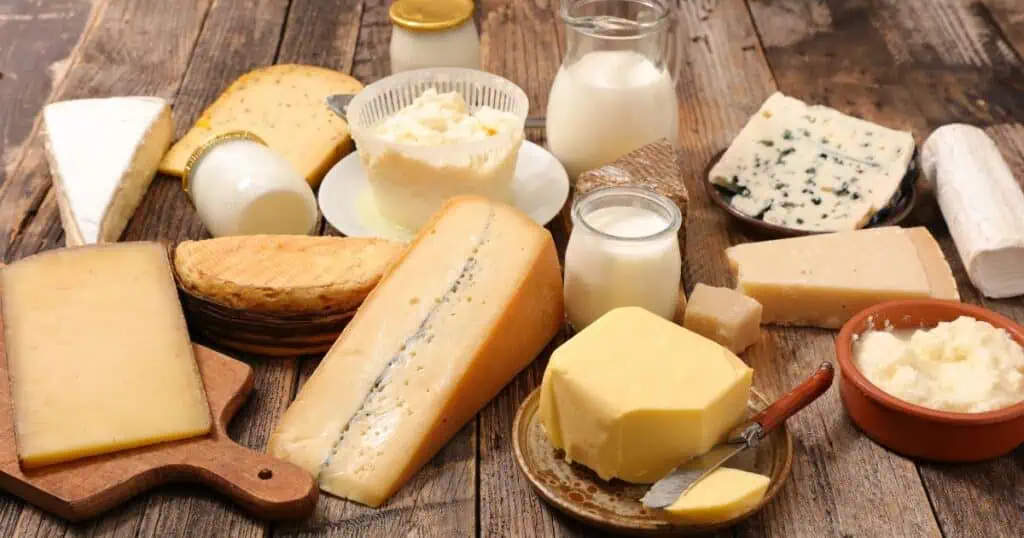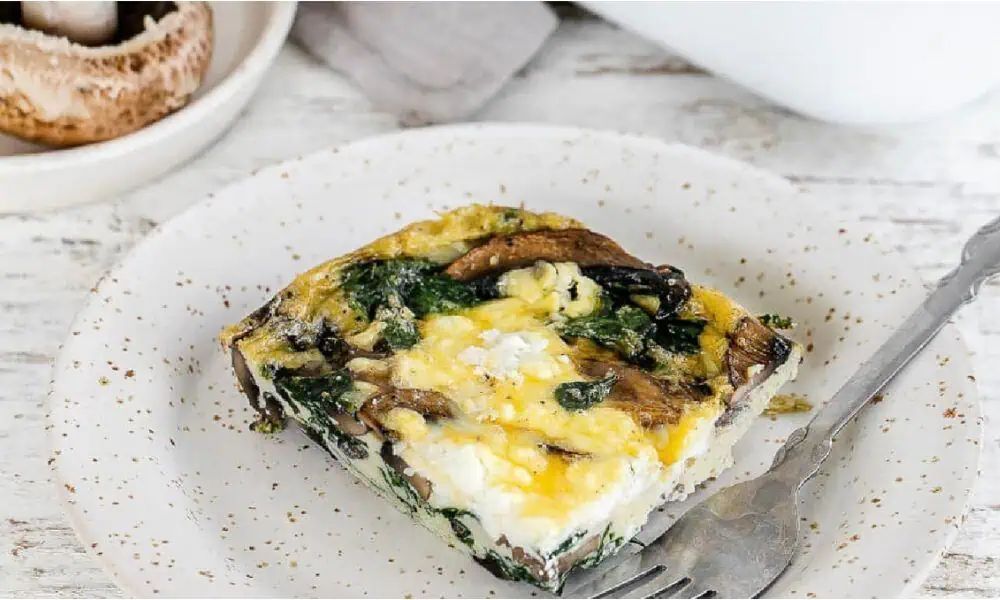Menopause and Dairy Intolerance: Is dairy disrupting your gut and hormones?

On a recent coaching call, one of my clients asked an excellent question:
“Why is cow’s dairy on the avoid list in your online Great Life Method?”
This comes up often, and the answer has everything to do with a protein in milk called casein—specifically the difference between A1 and A2 casein.
What are A1 and A2 casein?
Casein is one of the main proteins in cow’s milk, and it comes in two primary forms: A1 and A2.
A1 casein is found in most conventional cow’s milk you’ll find in grocery stores (Holstein and Friesian breeds, mainly).
A2 casein is found in older breeds like Jersey and Guernsey cows—and naturally in goat, sheep, and buffalo milk.
The difference between them?
Just one tiny amino acid in their protein chain. But this small change makes a big difference in how your body digests the protein.
Why A1 casein can be a problem
When A1 casein is digested, it can release a peptide called beta-casomorphin-7 (BCM-7).
Research suggests that BCM-7 may:
- Slow down digestion, leading to bloating or gas
- Trigger inflammation in sensitive individuals
- Contribute to gut discomfort that feels a lot like lactose intolerance (but isn’t!)
Is A1 casein sensitivity the same as lactose intolerance?
No—A1 casein sensitivity is different from lactose intolerance.
Lactose is the sugar in milk. People who are lactose intolerant lack enough of the enzyme lactase, making it hard to break down this sugar, which leads to bloating, gas, and loose stools.
Casein is a protein, and the reaction to A1 casein comes from how your body breaks it down—not from lactose.
Here’s what often happens:
Many people believe they are lactose intolerant, but they actually react to A1 casein. That’s why they may feel better when switching to A2 milk, goat cheese, or sheep yogurt, even though those still contain lactose.
What about A2 dairy?
A2 casein does not produce BCM-7 in the same way, and many people who react to regular cow’s milk find that they tolerate A2 milk, goat cheese, or sheep yogurt much better.
In The Great Life Method, we recommend avoiding most conventional cow’s dairy, especially at the start, to help reduce inflammation, support hormone balance, and give your gut a break.
Later, some clients successfully reintroduce A2 dairy or stick to goat and sheep products instead.
The Bottom Line
Avoiding cow’s dairy (especially A1) isn’t about restriction—it’s about creating the best possible environment for your body to thrive in midlife. By removing a common irritant, you give your gut, hormones, and energy levels a chance to reset.
Spinach, Mushroom & Goat Cheese Casserole

This hearty, low-carb casserole is rich in minerals, protein, and healthy fats—perfect for midlife women aiming to reduce inflammation while enjoying comfort food.
INGREDIENTS
- 2 cups fresh spinach, chopped
- 1 cup mushrooms, sliced
- 4 large eggs
- ½ cup full-fat goat cheese, crumbled
- ¼ cup coconut milk (or unsweetened almond milk)
- 1 tbsp olive oil or avocado oil
- 1 clove garlic, minced
- Sea salt and black pepper to taste
- Optional: fresh herbs (basil, thyme, or parsley)
INSTRUCTIONS
- Preheat oven to 375°F (190°C).
- Heat olive oil in a skillet, add garlic and mushrooms, and sauté until tender (about 5 minutes).
- Add spinach to the skillet and cook until wilted. Remove from heat.
- In a bowl, whisk eggs, coconut milk, salt, and pepper.
- Stir in the spinach-mushroom mixture and pour into a greased casserole dish.
- Sprinkle with crumbled goat cheese.
- Bake for 20–25 minutes or until the eggs are set.
- Garnish with fresh herbs and serve warm.
PLUS, here’s a fresh, vibrant recipe for a Beet, Arugula & Goat Cheese Salad—perfect as a light meal or side dish:
Beet, Arugula & Goat Cheese Salad

INGREDIENTS (Serves 4)
- 4 medium beets (red, golden, or mixed), roasted or boiled and peeled
- 4 cups fresh arugula
- ½ cup goat cheese (soft or crumbled)
- ¼ cup walnuts or pecans (toasted)
- 2 tbsp pumpkin seeds (optional)
- 2 tbsp red onion, thinly sliced (optional)
DRESSING
- 3 tbsp extra virgin olive oil
- 1½ tbsp balsamic vinegar (or apple cider vinegar for a lighter flavor)
- 1 tsp Dijon mustard
- 1 tsp honey or maple syrup (optional)
- Salt and freshly ground black pepper, to taste
INSTRUCTIONS
- Cook the Beets
- Preheat oven to 400°F (200°C). Wrap whole beets in foil and roast for 45–60 minutes, until fork-tender.
- Alternatively, boil whole beets for 30–40 minutes until tender.
- Let cool slightly, peel, and slice into wedges or rounds.
- Prepare the Dressing
- In a small jar or bowl, whisk together olive oil, balsamic vinegar, Dijon mustard, honey/maple syrup, salt, and pepper until emulsified.
- Assemble the Salad
- Place arugula in a large bowl or on a platter.
- Top with sliced beets, crumbled goat cheese, and toasted nuts/seeds.
- Add red onion if using.
- Dress & Serve
- Drizzle dressing just before serving. Toss gently to combine, or serve dressing on the side for a composed presentation.

